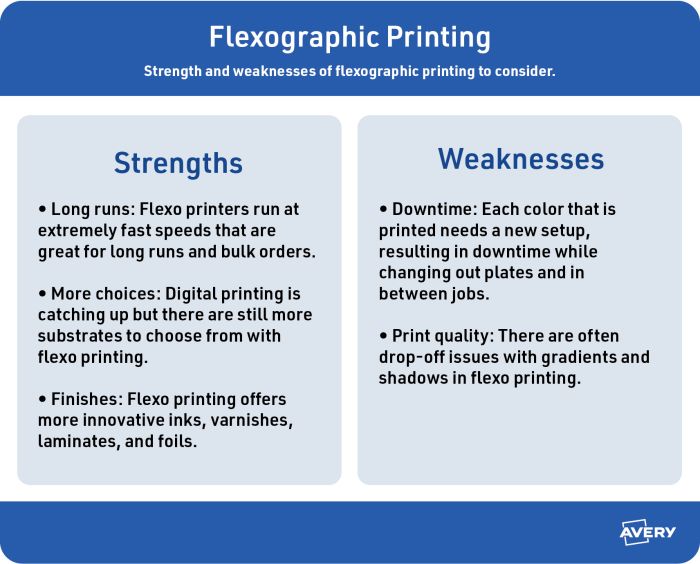All about Digital Printing
Table of ContentsEverything about Digital PrintingSome Of Digital Printing3 Simple Techniques For Digital PrintingGetting My Digital Printing To WorkThings about Digital PrintingDigital Printing Things To Know Before You Get This
has the benefit of just printing what you require. Balanced out printing's high configuration prices avoid it from being affordable for runs of 100, 10, and even a single duplicate. A personalized message is constantly well gotten by customers. Digital printing enables easy customization of advertising products. Smaller, more affordable batches allow business customize each order. Have a sale for the return to institution. You can personalize your newsletters for repeat customers by resolving them by name. Variable information printing, such as direct-mail advertising with customized codes and addresses, is preferably suited for electronic printing. Making modifications to your design at the last min is much easier with digital printing. It aids in. And this printing technique warranties precision, so designs will certainly always look the exact same. Choices for paper supply, surfaces, and other features will continue to expand as innovation breakthroughs. When it concerns printing, Seattle Layout and Print is among one of the most trustworthy business around. Digital fast printing only needs four actions of design, evaluation, printing and binding to get whatever done. Traditional printing covers a big area and requires a large financial investment in innovation. The financial investment of approximately tensof countless yuan has actually made some small and average investors dissuaded and vulnerable. The core of Digital Express is software application. As long as the software application updates can keep up, Digital Express will constantly be at the leading edge of the printing sector. And a set of software application of a number of thousand yuan is also small compared to a collection of tools of numerous
million yuan. A couple of individuals, a loads square meters of storefront, can open a digital specific printing shop. Digital fast printing has an unrivaled benefit: print on need - Digital Printing. The modern-day business design is versatile and versatile, and it is mirrored in the published issue. It
is most likely that today's requirements are different from yesterday.
According to PMMI, digital printing allows brands and producers to respond promptly to consumer demands while boosting the supply chain, lowering warehousing cost and waste, and delighting in faster time to market. That all sounds terrific, however how does this technology do all that? The significant differentiator of these innovations is that there are no set-up fees and no plates with electronic printing.
The Best Strategy To Use For Digital Printing
According to Wikipedia, the best difference between electronic printing and typical techniques such as lithography, flexography, gravure, or letterpress - Digital Printing is that there is no requirement to replace printing plates in digital printing, whereas in these click this analog printing approaches the plates are consistently changed. This results in quicker turn-around time and lowers cost when using digital printing.
Digital printing is highly flexible, so it's very easy to make changes to the package design quickly. It all goes back to the plates.
Extra inventory can mean more waste down the road. With conventional printing approaches, short-run printing is simply not feasible. Since a terrific style can make or damage your product, electronic printing consistently develops premium, clear and colorful graphics each time. Digital printing on versatile pouches adds the brilliant, vibrant, and specific graphics that virtually bid customers to reach out and touch them.
Digital printing is the process of printing digital-based images straight onto a selection of media substratums. There is no demand for a printing plate, unlike with offset printing. Digital documents such as PDFs or desktop computer posting data can be sent directly to the digital printing press to print on paper, image paper, canvas, fabric, synthetics, cardstock and various other substratums.
Some Known Questions About Digital Printing.
According to PMMI, electronic printing allows brand names and suppliers to respond swiftly to customer needs while boosting the supply chain, lowering warehousing price and waste, and appreciating faster time to market. That all sounds fantastic, but exactly how does this technology do all that? The significant differentiator of these innovations is that there are no set up charges and no plates with electronic printing.
This results in quicker turnaround time and lowers price when utilizing electronic printing.

The Greatest Guide To Digital Printing
With standard printing approaches, short-run printing is simply not possible. Due to the fact that a fantastic design can make or break your item, digital printing constantly produces high-grade, clear and vivid graphics each time.

According to PMMI, digital printing enables brand names and manufacturers to react swiftly to client demands while enhancing the supply chain, decreasing my latest blog post warehousing cost and waste, and enjoying faster time to market. That all audios excellent, yet just how does this modern technology do all that? The significant differentiator of these technologies is that there are no set up charges and no plates with digital printing.
Digital Printing Things To Know Before You Get This
According to Wikipedia, the best difference in between digital printing and conventional methods such as lithography, flexography, gravure, or letterpress is that there is no need to change printing plates in digital printing, whereas in these analog printing methods home plates are continuously changed. This leads to quicker turnaround time and reduces cost when using digital printing.
Digital printing is highly adaptable, so it's easy to make modifications to the package design promptly. It all goes back to the plates.

All About Digital Printing
Digital printing is the procedure of printing digital-based images straight onto a range of media substratums. There is no demand for a printing plate, unlike with balanced out printing. Digital documents such as PDFs or desktop computer publishing data can be sent out straight to the electronic printing machine to print theoretically, image paper, canvas, textile, synthetics, cardstock and various other substratums.